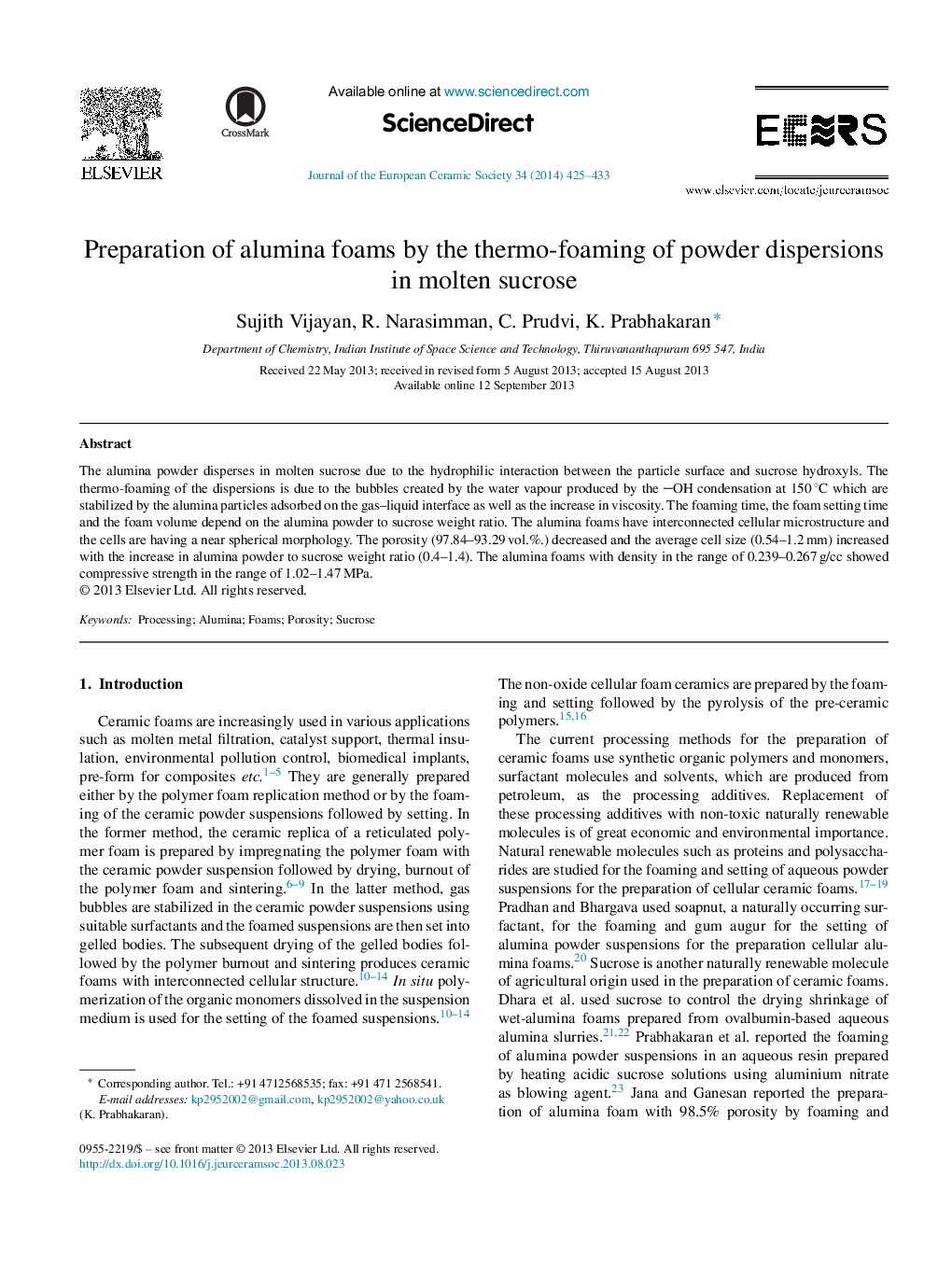| Article ID | Journal | Published Year | Pages | File Type |
|---|---|---|---|---|
| 1475130 | Journal of the European Ceramic Society | 2014 | 9 Pages |
The alumina powder disperses in molten sucrose due to the hydrophilic interaction between the particle surface and sucrose hydroxyls. The thermo-foaming of the dispersions is due to the bubbles created by the water vapour produced by the OH condensation at 150 °C which are stabilized by the alumina particles adsorbed on the gas–liquid interface as well as the increase in viscosity. The foaming time, the foam setting time and the foam volume depend on the alumina powder to sucrose weight ratio. The alumina foams have interconnected cellular microstructure and the cells are having a near spherical morphology. The porosity (97.84–93.29 vol.%.) decreased and the average cell size (0.54–1.2 mm) increased with the increase in alumina powder to sucrose weight ratio (0.4–1.4). The alumina foams with density in the range of 0.239–0.267 g/cc showed compressive strength in the range of 1.02–1.47 MPa.
